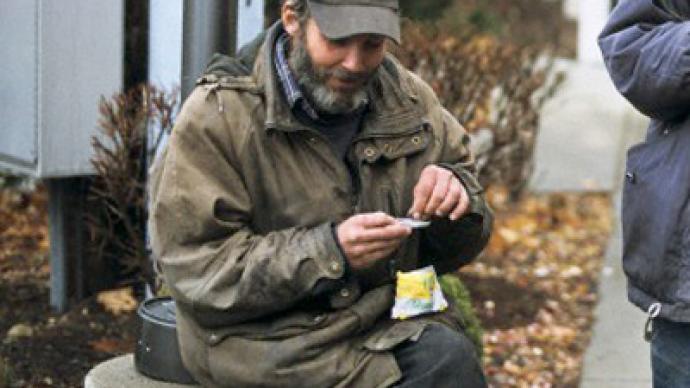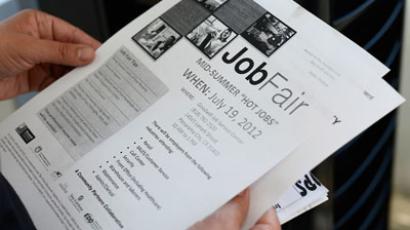The real jobs numbers: 41% of America unemployed, 1 in 3 doesn't want work at all

Even if the US Labor Department has determined that the unemployment level has finally plateaued after months of staggering jobs statistics, the truth behind the numbers isn’t all that nice. Only four out of every 10 adults in the US is employed.
While the percentage of Americans filing jobless benefit claims isn’t what it was during an unemployment epidemic that ravaged the country throughout the majority of US President Barack Obama’s administration, the Labor Department’s numbers are largely inflated on account of how they determine what actually constitutes looking for work. Officially, the unemployment rate in America for the month of September was only 7.8 per cent, but that statistic stems from only the number of citizens who have been actively searching for a paycheck. In reality, only around 5 per cent of the adult population in the US is unemployed in the eyes of the government, because they have been handing in applications during the four weeks before the Labor Department conducted their research. Additionally, another 3 per cent are interested in work, but haven’t actively engaged in a job hunting during that span, creating an unemployment figure of just under 8 per cent.The real figures, however, reveal a much scarier statistic."The employment-to-population ratio is the best measure of labor market conditions and it currently shows that there has been almost no improvement whatsoever over the past three years," Paul Ashworth, chief North American economist for Capital Economics, writes in a note to clients obtained by CNN. That figure, which accounts for the proportion of working Americans compared with the number of adults in the country, is a lot higher than 8 per cent.For now, 58.7 per cent of American adults are working if the actual employment-population ratio is taken into consideration, leaving about 82 million, or almost 41 per cent of people unemployed. Only 8 per cent, however, are even interested in work, leaving 33 per cent of Americans not only jobless — but with no desire for work."The ratio expresses more clearly how many people find working to be a 'good or attractive deal,'" Tyler Cowen, economist and director of the Mercatus Center at George Mason University, adds to CNN.If the numbers seem drastic, it’s because they are. So rampant in fact is the country’s seeming disregard for work that other just-released statistics show that funding welfare programs for the American population was the most expensive endeavor undertaken in all of Fiscal Year 2011.Republicans on the Senate Budget Committee released findings this week showing that the government spent roughly $1.03 trillion on welfare programs last year, funding 83 separate efforts to provide assistance to Americans. Days earlier, a separate study out of Capitol Hill revealed that the number of people enrolled to receive federal assistance by way of food stamps has hit a new record high with roughly 47 million US residents.“These astounding figures demonstrate that the United States spends more on federal welfare than any other program in the federal budget,” Alabama Sen. Jeff Session writes in a letter provided to The Daily Caller this week. “It is time to restore — not retreat from — the moral principles of the 1996 welfare reform. Such reforms, combined with measures to promote growth, will help both the recipient and the Treasury.”“No longer should we measure compassion by how much money the government spends, but by how many people we help to rise out of poverty,” Sessions adds. “Welfare assistance should be seen as temporary whenever possible, and the goal must be to help more of our fellow citizens attain gainful employment and financial independence. This is about more than rescuing our finances. It’s about creating a more optimistic future for millions of struggling Americans.”














